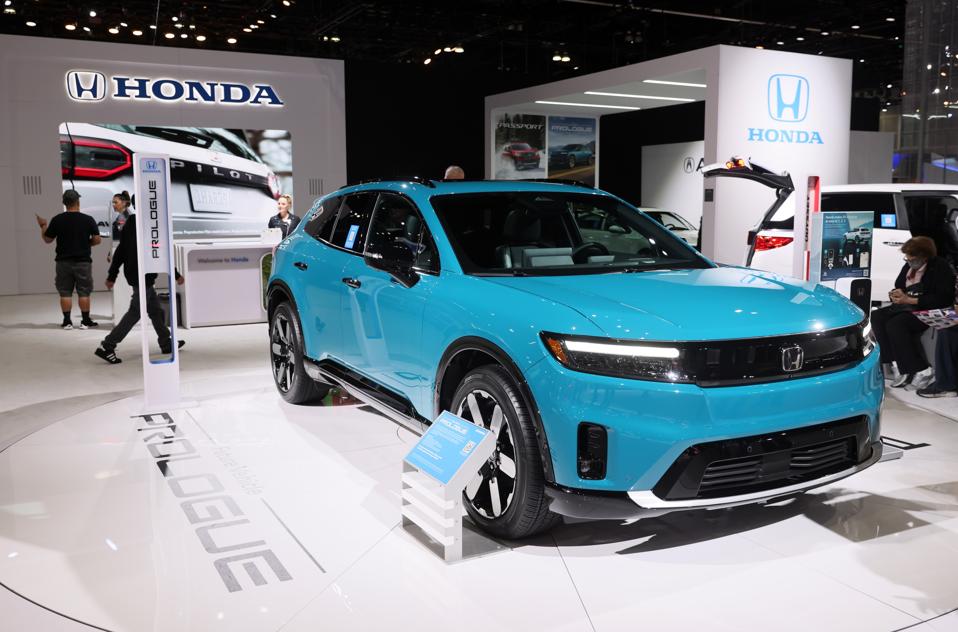Honda has just announced that it will cut $21 billion from its projected EV investments, citing a decrease in electric vehicles (EV) sales that isn’t actually happening. Sales of EVs did fall by 27% in Germany and 3.2% in France, but in the US, sales reached 1.2 million in 2024, a 9% increase. EV sales also saw a 23% rise in the UK—with these two latter figures outweighing the decline in the aforementioned markets.
The International Energy Agency (IEA) forecast that electric vehicle sales in 2025 would clear 20 million units worldwide which will be a 3 million unit rise over 2024 numbers.
Honda bucks EV trend and leans towards hybrids
But Honda, bucking this upward trend in EVs, says it will instead concentrate on hybrid vehicles, which naturally contribute to climate change as they run entirely on fossil fuels. Up until 2025, Honda has only launched one EV — the Honda e in Japan and Europe — and one EV—the Prologue SUV in the US.
Earlier this week, Honda said in Japan that it will abandon its goal of having 30% of its vehicles go electric by 2030, citing a “slowdown in the expansion of the EV market due to several factors, including changes in environmental regulations.” As I mentioned above, that so-called slowdown is just a perceived slowdown being made by Honda to serve its purposes. Honda’s intended investment will now be 7 trillion yen ($48 billion) instead of 10 trillion yen ($69 billion).
Honda’s planned EV lineup will drop below 30% or total production run
Honda stated that EVs would drop below the previously stated objective of 30% of sales by 2030, while it did not specify its updated schedule. This strategy appears to continually go against industry trends.
Instead, Honda stated that it would concentrate on hybrid vehicles and plug-in hybrids, which rely on fossil fuels for their energy that contribute to climate change.
These gas-guzzling hybrids will “be introduced to the market in 2027 onwards,” according to Honda, meaning they will continue to contribute to climate change and drive on our roads for decades to come, even after the company reaches its 2050 carbon-neutrality goal.
Meanwhile Volvo is at 90% electrification
Even after many rivals including Toyota have rolled back their EV goals, Honda’s prior plan of 30% by 2030 was already quite low when compared to other global automakers, some of which—like Volvo—had originally pledged up to 100% of their lineup would be EV by 2030 before rolling back that figure to 90-100% will be EV or PHEV.
Future hybrid models from Honda will “play a key role during the transition period towards the popularisation of EVs,” according to the company. EVs are already at or close to a majority market share in some of auto-selling nations like Norway which boasts an EV sales majority of 88% in 2024 where as Sweden sits at around 60%.
According to estimates, 25% of cars sold worldwide will be electric vehicles this year rather than in 2030. Therefore, any company that sells less than that is falling behind the curve and losing market share to rivals who are prepared for the current shift. Speeding up, not slowing down, is the best approach to catch up — a trend that Honda appears to be balking at.
This 25% EV sales forecast shouldn’t come as a surprise because, as we are continually reminded, EV sales have been increasing globally for many years and keep growing.
With new regulations in effect in China and Chinese brands offering the lion’s share of the EV market, EV adoption is rising rapidly as ICE cars have become virtually unsellable there. In fact, Honda’s profits are falling in China because of the speedy advancement to the Chinese market.
AP reports that Honda’s Q1 profits dropped by 24.5%, driven largely by falling sales in China in the face of local EV competition. We feel Honda needs to rethink its EV strategy and quick smart before it gets left behind.

